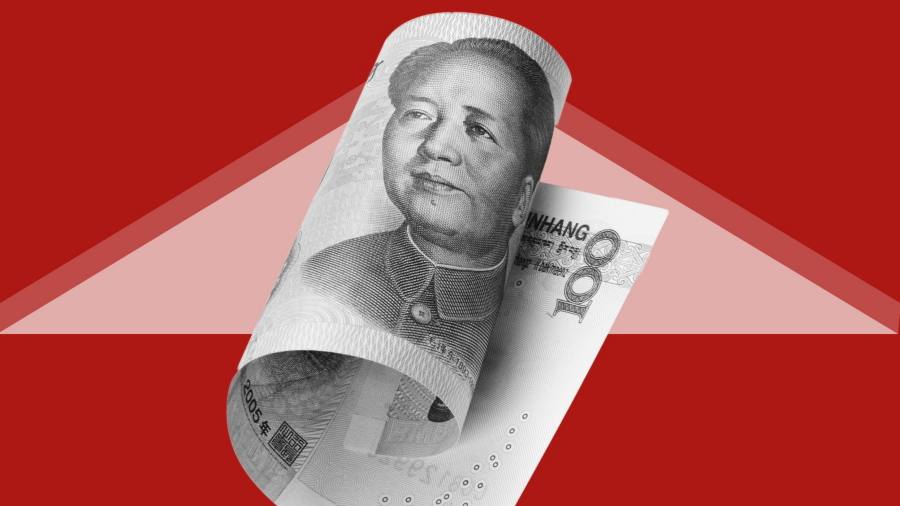Receive free Currencies updates
We’ll send you a myFT Daily Digest email rounding up the latest Currencies news every morning.
China’s renminbi is on track for its best monthly performance against the dollar in half a year, after policymakers deployed direct and indirect support measures to combat depreciation expectations, traders and analysts said.
The renminbi rose about 1.5 per cent in July to Rmb7.1475 per dollar, putting a floor under the exchange rate after a punishing three-month sell-off in which the Chinese currency tumbled more than 5 per cent on intensifying concerns over economic growth.
Traders said that both official limits on the exchange rate’s movement and indirect intervention from state banks buying up the currency had helped snap the renminbi’s protracted losing streak, after the Communist party’s Politburo voiced support for a “basically stable” exchange rate at an “appropriate level of equilibrium” in a statement on July 24.
Analysts at Citigroup said the new language reflected official “unease” with the renminbi’s rapid weakening in recent months, and currency traders in China said support for the currency from state lenders had intensified following the Politburo statement.
“We’ve seen a lot of dollar-renminbi selling right after the market open, especially from the Chinese banks,” said one veteran currency trader at a foreign lender based in mainland China. Another forex trader at a European bank in Shanghai said state banks had become heavy net buyers of the renminbi after the Politburo’s statement.
“The signals sent by the Politburo meeting [statement] were stronger than expected,” the trader said, adding that the timing was ripe to buy the Chinese currency “since the Fed’s rate hikes are almost done for 2023”.
If that widely anticipated end to rate rises materialises this year, it would stop US Treasury yields from pushing even further above their Chinese counterparts — a trend that has prompted global investors to dump holdings of renminbi-denominated debt over the past 12 months.
China’s central bank, the People’s Bank of China, has also nudged the currency higher against the dollar through its daily fixing of the renminbi’s trading band in recent weeks, repeatedly setting the midpoint for that range stronger than markets expected.
“The fixing deviation was quite obvious,” said Ju Wang, head of Greater China foreign exchange and rates strategy at BNP Paribas, who also pointed to language in the Politburo’s statement calling for strong “countercyclical” measures to support the economy.
“These are all strong signs that they do not want the market to believe the renminbi will depreciate significantly from here,” Wang said.
Among other supportive measures, China’s largest state banks have lowered their dollar deposit rates several times in recent months in line with guidance from central authorities seeking to prevent domestic stockpiling of dollars and ease depreciation pressure on the renminbi, according to bank statements and traders.
Such onshore dollar deposits at Chinese banks have previously been mobilised as a form of invisible reserves to relieve pressure on the renminbi, the Financial Times has reported, as an indirect but effective alternative to burning through the foreign reserves held by the PBoC.
Zhou Hao, economist at Guotai Junan Securities, said the market was primed to expect a stronger renminbi in the third quarter in part due to a weakening dollar, and tipped trading to pick up whenever the exchange rate neared critical thresholds of about Rmb7.15 and Rmb7 per dollar.
But traders remained cautious on the sustainability of the Chinese currency’s rebound, particularly if the economic drag from a crackdown on overleveraged property developers continues, despite some policy support for the sector.
“The market is watching the implementation of property market policies,” another trader said. “If those don’t work in the second half of 2023, then there will be a new market consensus on the exchange rate — and it’s likely to be a historic low.”
Read the full article here



